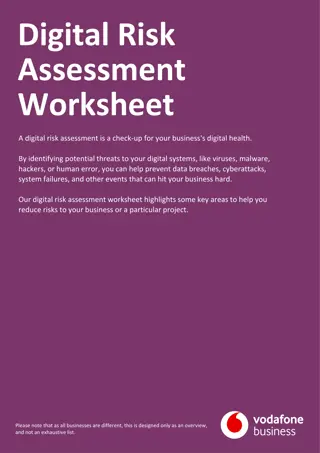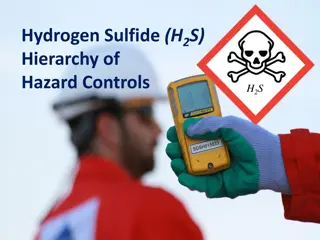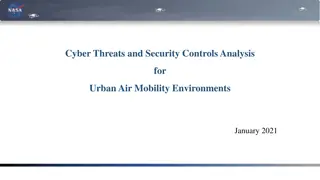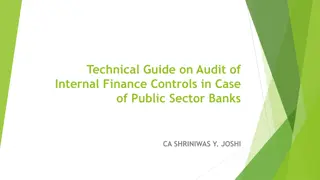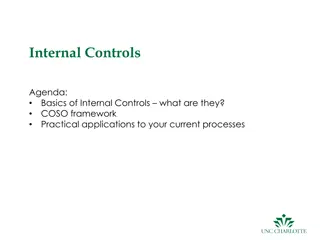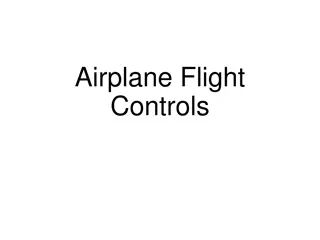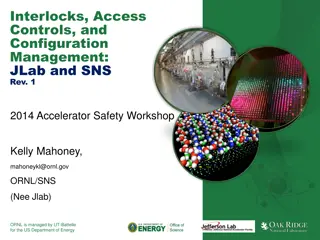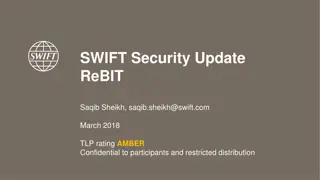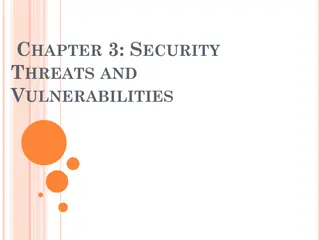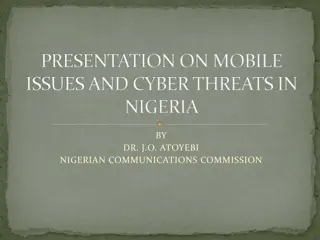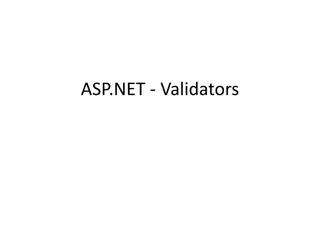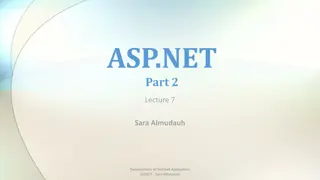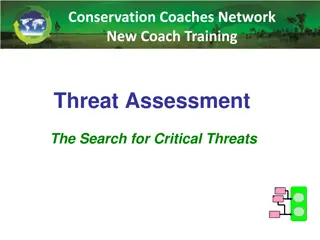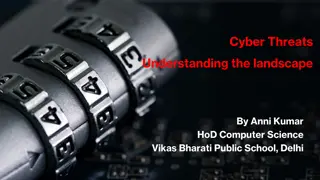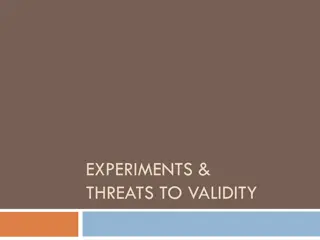Securing Information Systems: Threats, Controls, and Solutions
Explore the critical aspects of securing information systems, including system vulnerabilities, business value of security, framework establishment, security technologies, case studies, security policies, threat identification, internet and wireless risks, malicious software, and more. Learn about unauthorized access, data protection measures, the importance of security controls, and the various types of threats posed by technology advancements.
Download Presentation

Please find below an Image/Link to download the presentation.
The content on the website is provided AS IS for your information and personal use only. It may not be sold, licensed, or shared on other websites without obtaining consent from the author. Download presentation by click this link. If you encounter any issues during the download, it is possible that the publisher has removed the file from their server.
E N D
Presentation Transcript
261446 Information Systems Week 7 Securing Information Systems
Week 7 Topics System Vulnerability & Abuse Business Value of Security & Control Establishing a Framework for Security & Control Technologies & Tools for Protecting Information Resources
Case Studies Case Study #1) US Election Case Study #2) Equifax
Security & Controls Security Policies, procedures and technical measures used to prevent unauthorized access, alteration, theft or physical damage to information systems Controls Methods, policies and organizational procedures that ensure the safety of the organization s assets, the accuracy and reliability of its records and operational adherence to management standards
Threats Unauthorised access can occur at any access point in the network At every layer, and in the communication between layers When partnering with other companies, valuable information may exist on networks & computers beyond the control of the organization With the growing popularity of mobile devices the threats increase Data goes mobile Easy to lose or steal
The Internet & Wireless As systems move more onto the Internet, more data flows through machines that the organization has no control over. Transmitting data via email or IM may leave them open to interception Email & P2P file sharing is also vulnerable to malicious software Connecting wirelessly (particularly via public wifi connections) also opens possibilities for hackers Wardriving!
Malicious Software Malware Virus - rogue software program attached to other software programs to be executed Worms independent programs that copy themselves from one machine to another Trojan Horse program that appears to be benign, and then does something unexpected Spyware Monitor activity such as web surfing activity, and offer up advertising Keyloggers record every keystroke made to steal passwords, or personal information
Malware Malware goes Mobile Hackers can do to a smartphone just about anything they can do to any other internet device Kaspersky Lab found 5.7 million mobile malicious packages in 2017. Malware goes Social Networking Blogs, wikis & sites like Facebook are also conduits for malware or spyware Malware goes IoT Malware is Increasing Particularly Trojans, but there are increasing amounts of malware being produced as many as one in ten downloads contains harmful programs.
SQL Injections Poorly coded Web application software to introduce malware into a company s systems & networks Rogue SQL queries sent to access the database from any data entry point.
Spoofing & Sniffing Misrepresenting oneself Fake email address / website Redirecting a weblink Sniffing software can be used legitimately to identify network trouble spots, or criminal activity, or can be used to steal information
Denial of Service Attacks DoS attacks or DDoS attacks F5 Botnets make DDoS attacks easier Grum botnet responsible for 18% of spam traffic, having infected and controlled 560,000-840,000 computers The Mirai botnet infected IoT devices and then launched a DDoS attack against Dyn in October 2016, taking down Etsy, GitHub, Netflix, Shopify, Soundcloud, Twitter, Spotify
Computer Crime Any violations of criminal law that involve knowledge of computer technology for their perpetration, investigation or prosecution Nobody knows the extent of computer crime Many companies don t report computer crimes, for fear their vulnerability will be exposed
Computer Crime Computers as targets of crime Breaching confidentiality of protected data Accessing a computer system without authority Knowingly accessing a protected computer to commit fraud Intentionally accessing a protected computer and causing damage Knowingly transmitting a program, code or command that causes damage to a protected computer Threatening to cause damage to a protected computer
Computer Crime Computers as instruments of crime Theft of trade secrets Unauthorised copying of software or IP Schemes to defraud Using email for threats or harassment Intentionally attempting to intercept electronic communication Illegally accessing stored communications Child Pornography
Identity Theft Also increasing 11.6 million people, losses of $18 billion (in 2011) 17.6 million people, losses of $17 billion (in 2017) How? Hacking Ecommerce website databases Phishing Evil Twins Pharming
Click Fraud Fraudulent clicks on ads I could put some ads on kencosh.com, and click on them or get y all to click on them Or, fraudulent clicks on competitors ads, to drive up their marketing costs
Internal Threats: Employees Employees have access to information Can you trust them? Many employees lack the knowledge to protect themselves against security breaches Social Engineering Tricking employees by pretending to be a member of the company in need of information
Why Spend on Security? No tangible return on investment No direct impact on sales revenues But what if there IS a breach? Confidential records, tax reports, financial assets, medical records, performance reviews, trade secrets, new product development plans, marketing strategies. Government systems contain information on weapons systems, intelligences ops, military targets And what about the Legal responsibility?
Legal Responsibilities? Different countries have different legal liabilities
IS Security Protection Identity Management & Authentication Keeping track of users and their system privileges. Passwords How good is your password? Physical Token Could you lose it, or leave it behind? Biometrics
IS Security Protection Firewalls Hardware and software controlling incoming and outgoing network traffic Checks names, IP addresses, etc. against access rules Packet filtering examines the header of each packet, Stateful inspection tracks if packets are parts of ongoing dialogues Network Address Translation (NAT) conceals the true IP address of computers within the private network
IS Security Protection Intrusion Detection Monitoring vulnerable parts of a system if there is a breach, finding out that it has happened, and what the intruder has done is not easy. Anti-virus / Anti Spyware Encryption & Public Key Infrastructure Translating plain text into cipher text that requires the encryption key to decode
Ensuring System Availability (Reliability) Redundant Hardware, Software, Power Supplies, Network connections Triple Modular Redundancy for Hardware Components N-Version Programming for Software Components



